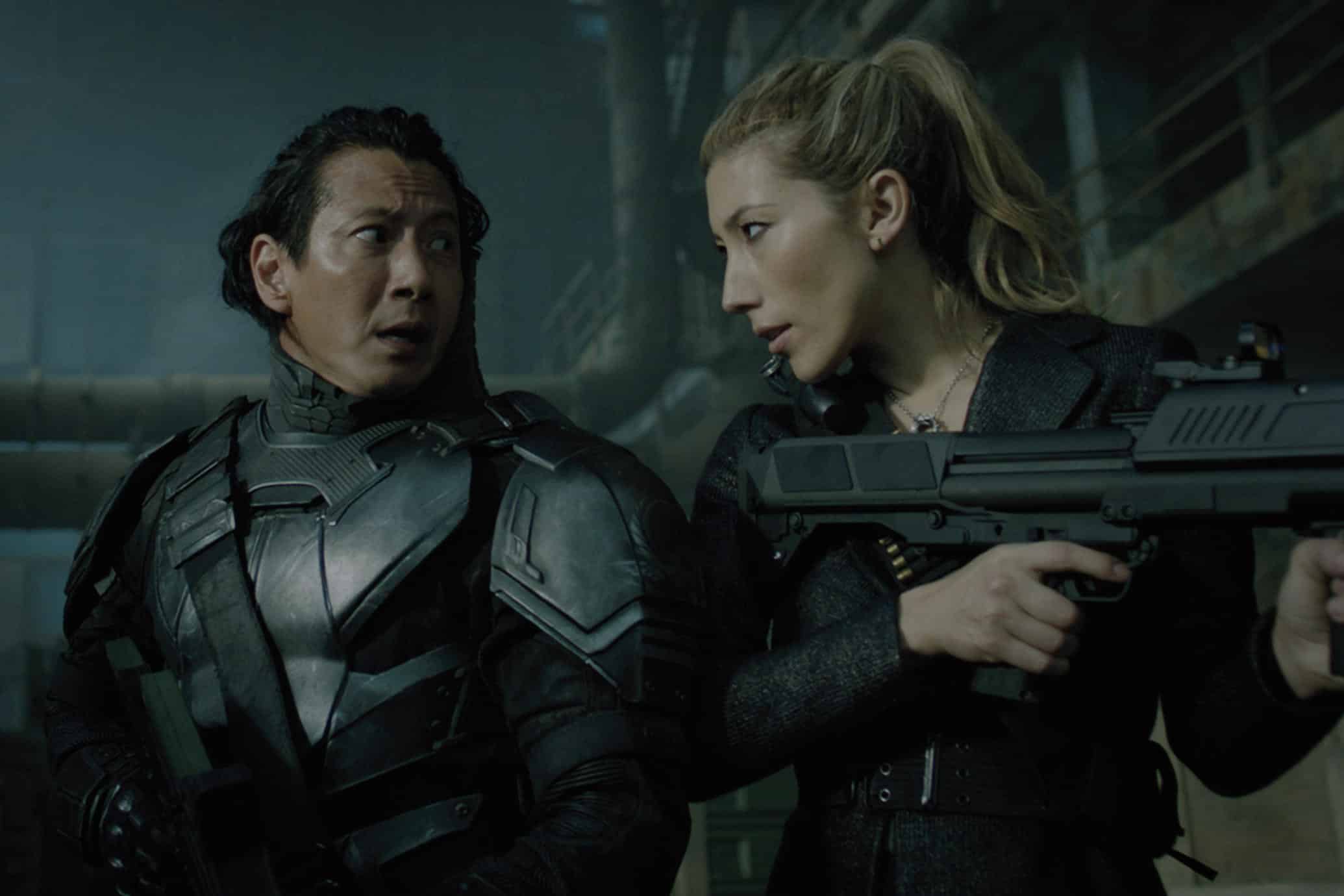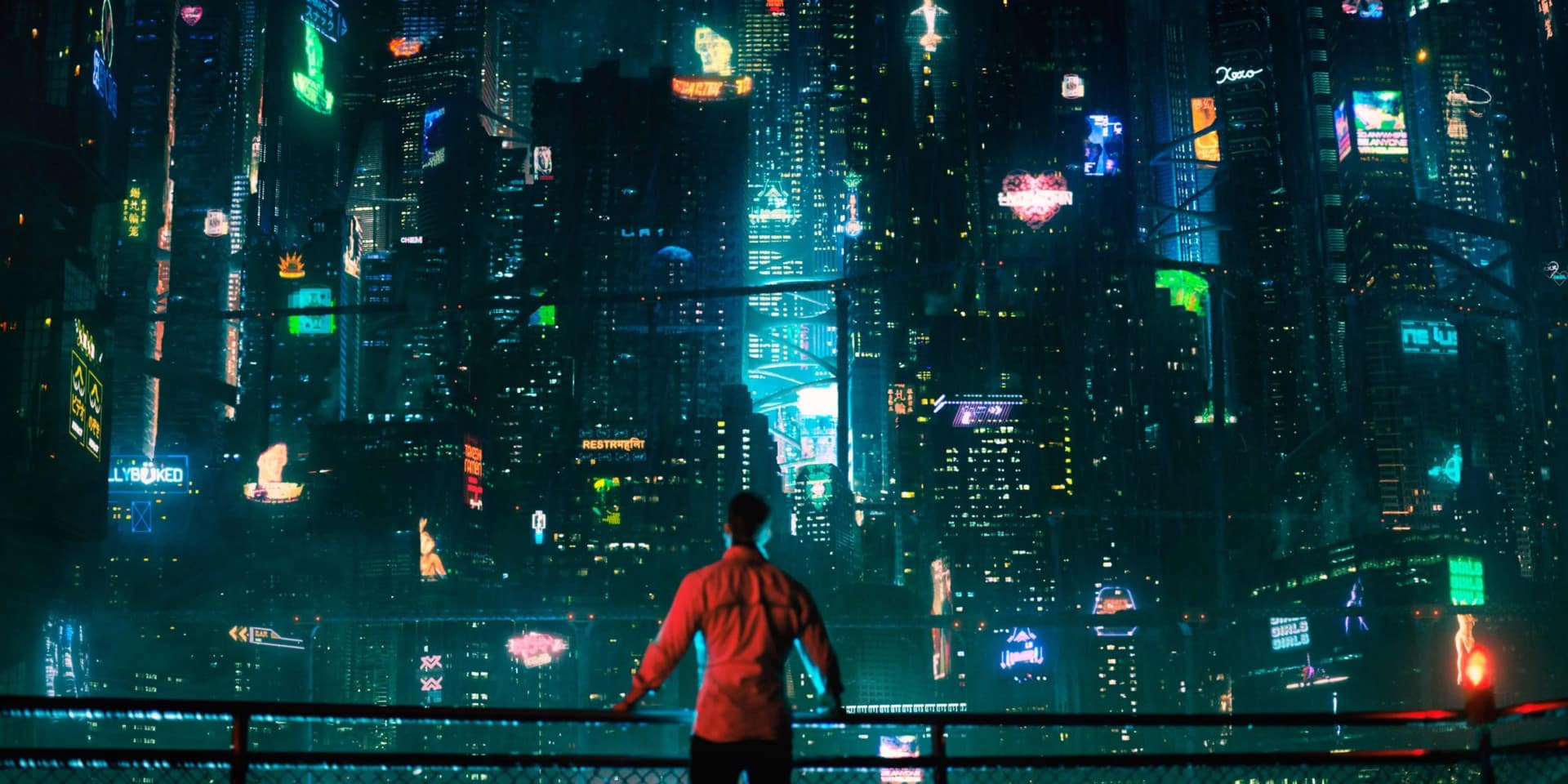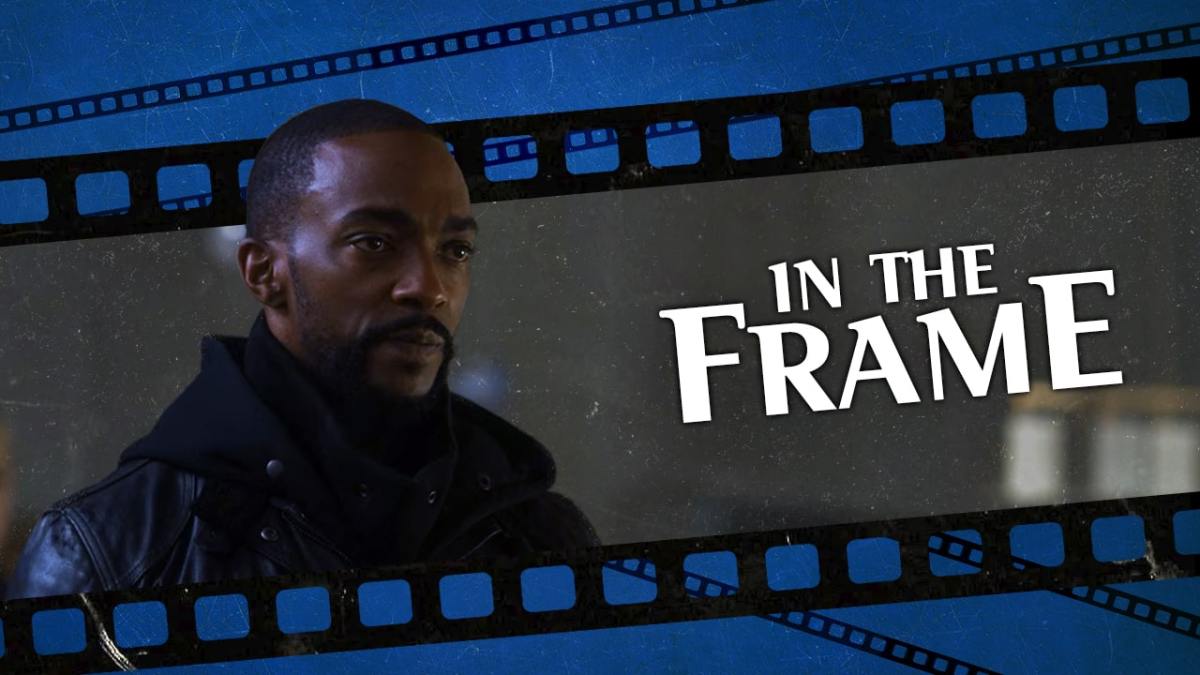The future presented in Altered Carbon is an inherently nostalgic one.
Of course, science fiction is (and always has been) as much about examining the present as imagining the future, but there is still something striking about how closely Altered Carbon’s vision of the 24th century resembles the science fiction futures of the 1980s. It is pure ’80s Gibson-esque cyberpunk.
There’s a fascinating paradox at play here, a distant future as imagined 40 years ago. The first season’s suffocating metropolis recalls the grim dystopias of films like Blade Runner, Ghost in the Shell, and Akira, realized with the benefits of a lavish Netflix budget. There are oppressive skyscrapers, flying cars, and a sense that no natural light reaches this world.
The series is infused with the aesthetic of 1980s science fiction, down to the casting. There’s a small recurring role for actor Matt Frewer, playing a sinister artificial intelligence named Carnage. Frewer seems to have been cast as a reference to his role as cult ‘80s science fiction icon Max Headroom, with Carnage even altering his face at one point to evoke Max.
Some of this nostalgia is less explicit, such as the show’s fascination with Japan. Much is made of the “trade deal” that Laurens Bancroft (James Purefoy) completed in Osaka shortly before his death. Reileen Kawahara (Dichen Lachman) is reintroduced into the show’s present in a manner that evokes the cinematic language of the ninja, clad in black and carrying a samurai sword.
This reflects the obsession with Japan that infused so much ’80s and early ’90s pop culture: Frank Miller’s Daredevil and Ronan, the Japanese influence on Los Angeles in Blade Runner, films like Black Rain, Rising Sun, and Die Hard. This fascination was tied to contemporary concerns — the very real fears about Japan’s emergence as an economic and technological powerhouse during the decade.
At least some of this nostalgia is reflexive. In the first season, Takeshi Kovacs (Joel Kinnaman) finds himself cast in the role of a film noir detective, investigating a seemingly impossible murder. To help him, he enlists an artificial intelligence impersonating Edgar Allan Poe (Chris Conner), the author of “the first detective story.” Poe watches black-and-white detective films to understand his role.
Even then, Altered Carbon seems to simply be acknowledging the debt that films like Blade Runner owe to film noir. However, what is striking about the future of Altered Carbon is that it doesn’t seem to imagine a particularly new future. Instead, it repurposes the vision of the future that has been a fixture of pop culture dating back to the penultimate decade of the 20th century.
Altered Carbon isn’t alone in this respect. The first season was released in February 2018, following closely on the heels of an American adaptation of Ghost in the Shell and Blade Runner 2049. Both of those futures remained frozen in time as well, with Blade Runner 2049 even featuring advertisements for brands that no longer existed in the real world, but did in the original.

There is a sense in which the future no longer appears to be ahead of us. William Gibson, who is credited in some cases as the creator of cyberpunk, set his Blue Ant trilogy in the (extremely recent) past, and his most recent book, Agency, even explores an alternate present. Although cyberpunk is often discussed as a nostalgic retro-future, it is a broader trend in contemporary science fiction.
The original Star Wars films offered a “used future,” a sense that the romantic sci-fi of the early 20th century had grown rusty. This arguably tapped into the anxieties of a generation affected by the horrors of Vietnam and disillusioned by the Watergate scandal, but perhaps even underwhelmed by the moon landing and the realization that the “new frontier” was just a dead floating rock.
Still, even that “used future” had a sense of novelty to it. So many modern futures are anchored in recycled iconography. The Star Wars sequel trilogy offered a used “used future,” trading on nostalgia for the original films. The bulk of 21st century Star Trek consists of prequels to its future universe, series like Enterprise and Discovery set in its own past, and films like Star Trek offering an origin story.
It’s notable that even a lot of original modern science fiction unfolds in a future that is functionally indistinguishable from our present: Her, Ex Machina, even a lot of Black Mirror. Indeed, modern pop culture seems to have an easier time imagining varied takes on the apocalypse than constructing a cohesive vision of a viable future for mankind.
It’s interesting to wonder why modern pop culture seems to have lost the capacity to imagine new or original futures. Part of this may simply reflect a general uncertainty about the future. Despite the infamous promise made by Vice President Dan Quayle, it seems that increasingly few people believe that “the future will be better tomorrow.”

Surveys suggest that a majority of Americans are pessimistic about what the future holds in terms of income inequality, environmental catastrophe, and economic instability. In 2016, half of Americans believed their children would be “worse off” than they are. (The polling left the definition of “worse off” deliberately open to interpretation.) This might explain the retreat into safe and familiar futures.
More than that, there is an argument to be made that perhaps our visions of the future haven’t changed because the present remains stuck in place. At the end of the Cold War, Francis Fukuyama argued that mankind had arrived at “the end of history.” While this prediction perhaps proved misguided in political terms, it might have more weight as a piece of cultural criticism.
Kurt Andersen has argued that fashion and design remain stuck in the early 1990s. 1960s fashion was radically different from 1970s fashion, which was radically different from 1980s fashion. In contrast, the fashion in 1990s television shows like The X-Files or E.R. doesn’t seem as far removed from the present as those in Starsky and Hutch or Miami Vice. The same might be true of art.
If the present cannot move on, then what chance has the future? For all that Altered Carbon feels like an ’80s throwback, many of its themes still resonate. As with Reagan-era science fiction like RoboCop or They Live, Altered Carbon is a story about the grotesque absurdities of hyper-capitalism. Does that not resonate in a world where a billionaire is president and income inequality continues to rise?

In this context, it feels entirely appropriate that the first season of Altered Carbon starred Joel Kinnaman, who also headlined the recent remake of RoboCop. Along with the recent remake of Total Recall, that misfire reflected an attempt to bring Paul Verhoeven’s heightened ’80s satire into the present, without any understanding of how or why it worked.
At the very least, Altered Carbon understands that its future is trapped in stasis. The series is built around the idea of immortality, allowing the wealthy to cocoon themselves and resist change. Kovacs is told that Laurens Bancroft “will not allow what he loves to grow and change,” even keeping his son trapped in a teenager’s body for decades. The series rightly acknowledges this as monstrous.
Altered Carbon sides with its revolutionaries, led by the charismatic Quellcrist Falconer (Renee Elise Goldsberry). Falconer designed the “stack” technology that has allowed this stasis to set in, to allow the wealthy like Bancroft to stop the world from growing and changing. Falconer’s revolution is built around the necessity of destroying that technology. “We aren’t meant to live forever.”
Altered Carbon offers a vision of the future that has been recycled for the better part of four decades, a reflection of pop culture’s difficulty conceiving of new futures and possibilities. As much as Altered Carbon revels in the trappings of that recycled future (right down to its charmingly lurid violence and nudity), there is a sense that even it is unsettled by its inability to change.
Altered Carbon has fun with its retrograde future, but it remains just a little uneasy about our inability to imagine something more.





